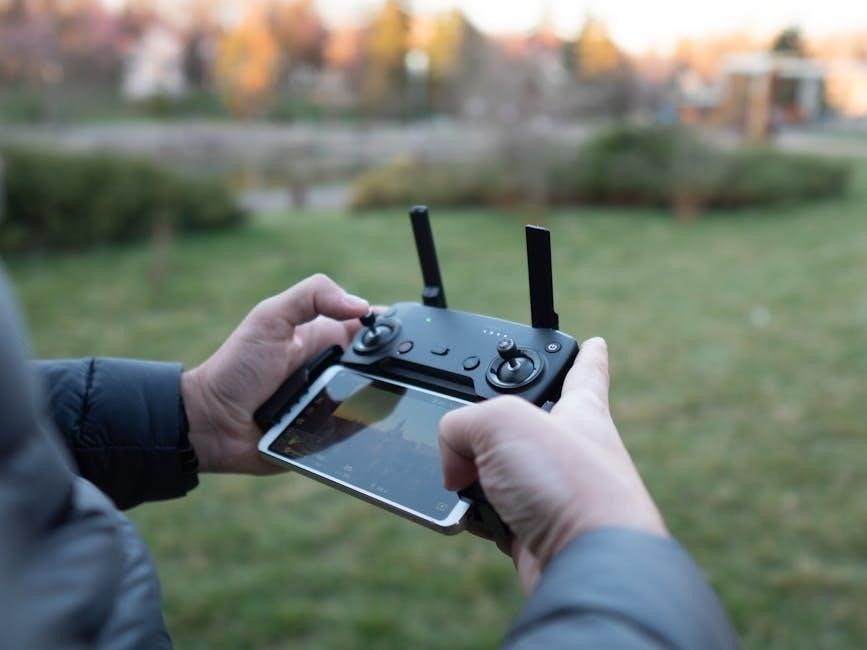The X-31 Shockwave Drone is an advanced unmanned aerial vehicle (UAV) designed for versatility and efficiency. It combines cutting-edge technology with robust engineering to deliver superior performance in various operational environments. This manual serves as a comprehensive guide for operators, ensuring safe and effective utilization of the drone’s capabilities.
1.1 Overview of the X-31 Shockwave Drone
The X-31 Shockwave Drone is a high-performance unmanned aerial vehicle (UAV) designed for precision and reliability. It features a sleek, aerodynamic design optimized for speed and maneuverability, making it suitable for a wide range of applications. Equipped with advanced avionics and navigation systems, the drone ensures accurate mission execution and real-time data transmission. Its robust propulsion system and efficient fuel management enable extended operational ranges. The X-31 also boasts a modular payload capacity, allowing for customization based on specific mission requirements. With cutting-edge communication technologies, it maintains seamless connectivity with ground control stations. This drone is engineered to deliver exceptional performance in both military and civilian contexts.
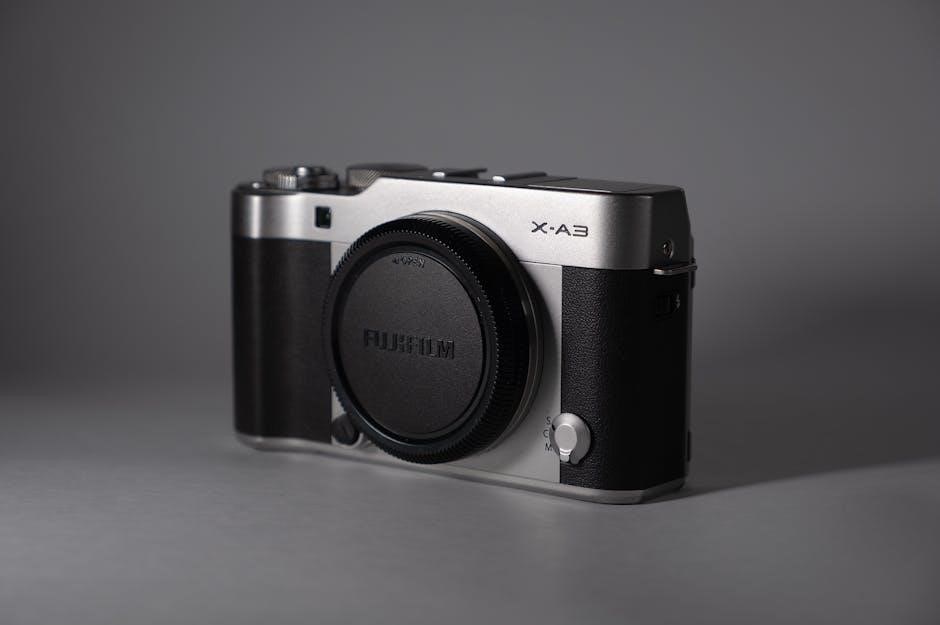
1.2 Importance of the Manual for Operators
This manual is an essential resource for operators of the X-31 Shockwave Drone, providing critical information for safe and effective operation. It outlines pre-flight checks, mission planning, and emergency protocols to ensure operational readiness. The manual also details the drone’s advanced features, enabling operators to maximize its capabilities while minimizing risks. Proper adherence to the guidelines ensures compliance with safety standards and regulatory requirements. Regular review and understanding of this manual are vital for maintaining operational excellence and preventing potential malfunctions. By following the manual, operators can optimize the drone’s performance and achieve mission objectives efficiently.

History and Development of the X-31 Shockwave Drone
The X-31 Shockwave Drone was developed through a collaborative effort between aerospace innovators and defense experts. Its design began in the early 2000s, focusing on advancing UAV technology for military and civilian use. The drone underwent extensive testing and refinement to ensure reliability and performance. This project marked a significant leap in autonomous systems, paving the way for future innovations in unmanned aviation. Its development highlights the fusion of cutting-edge engineering and strategic operational needs.
2.1 Origins and Evolution of the X-31 Program
The X-31 Shockwave Drone program originated from a need for advanced unmanned aerial systems capable of performing high-risk missions. Conceived in the late 1990s, the project brought together leading aerospace companies and research institutions. Initially focused on military applications, the program evolved to incorporate civilian uses, such as surveillance and research. Key advancements in AI and propulsion systems were integrated during its development. The X-31’s design was influenced by earlier UAV prototypes, with a focus on improving maneuverability and endurance. Over time, the program expanded to include international collaboration, further enhancing its technological capabilities. This evolution ensured the X-31 remains a cutting-edge solution for modern challenges.
2.2 Key Milestones in the Development Process
The X-31 Shockwave Drone program achieved several critical milestones during its development. The first prototype was unveiled in 2005, marking the beginning of extensive testing phases. By 2008, the drone successfully completed its maiden flight, demonstrating exceptional stability and maneuverability. In 2010, advanced avionics and propulsion systems were integrated, significantly enhancing performance. The program reached a major breakthrough in 2012 with the implementation of autonomous navigation capabilities. Collaboration with NASA in 2015 further refined the drone’s aerodynamic design. Finally, in 2018, the X-31 entered operational service, proving its reliability in both military and civilian applications. These milestones underscore the program’s commitment to innovation and excellence.

Design and Engineering of the X-31 Shockwave Drone
The X-31 Shockwave Drone features a sleek, aerodynamic design optimized for speed and agility. Advanced engineering ensures durability and adaptability, making it suitable for diverse operational demands.
3.1 Aerodynamic Design and Structure
The X-31 Shockwave Drone boasts a streamlined aerodynamic design, engineered to minimize drag and maximize speed. Its sleek, angular shape enhances maneuverability, while the lightweight yet durable structure ensures optimal performance. Advanced wing geometry improves lift and stability during high-speed operations. The drone’s airframe is constructed from high-strength, lightweight materials to withstand extreme conditions. Integrated control surfaces provide precise handling, allowing for sharp turns and rapid altitude changes. The design also incorporates features to reduce turbulence and enhance stability during flight. This aerodynamic excellence makes the X-31 highly efficient and adaptable for various missions.
3.2 Propulsion Systems and Fuel Efficiency
The X-31 Shockwave Drone is equipped with a high-performance dual turbofan engine, designed for exceptional power and fuel efficiency. Advanced engine technology ensures minimal fuel consumption while delivering rapid acceleration and sustained speed. The propulsion system incorporates smart fuel management, optimizing endurance for extended missions. Aerodynamic enhancements further reduce drag, contributing to improved fuel economy. The drone’s operational range is significantly extended, making it ideal for long-duration tasks. Regular maintenance of the propulsion system is critical to maintain peak performance. Operators should adhere to specified fuel guidelines to ensure optimal efficiency and reliability during missions. This design ensures the X-31 remains a versatile and dependable asset.

3.3 Advanced Materials and Durability
The X-31 Shockwave Drone features a lightweight yet robust airframe constructed from high-strength, advanced composite materials. These materials, including carbon fiber and titanium alloys, provide exceptional durability while minimizing weight. Resistance to environmental stress is enhanced through corrosion-resistant coatings and weather-sealed components. The drone’s structure is designed to withstand extreme temperatures, vibrations, and operational stresses. Impact-absorbing technologies further protect critical systems during landing or potential collisions. Regular inspections and maintenance are essential to preserve the drone’s structural integrity. This combination of advanced materials and innovative engineering ensures the X-31 maintains peak performance and longevity in demanding environments.
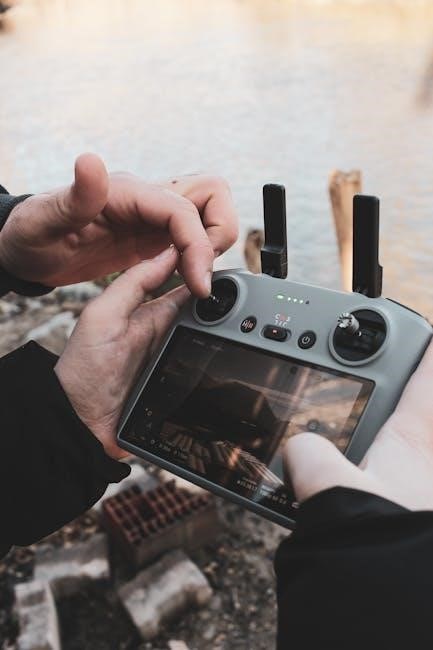
Features and Capabilities of the X-31 Shockwave Drone
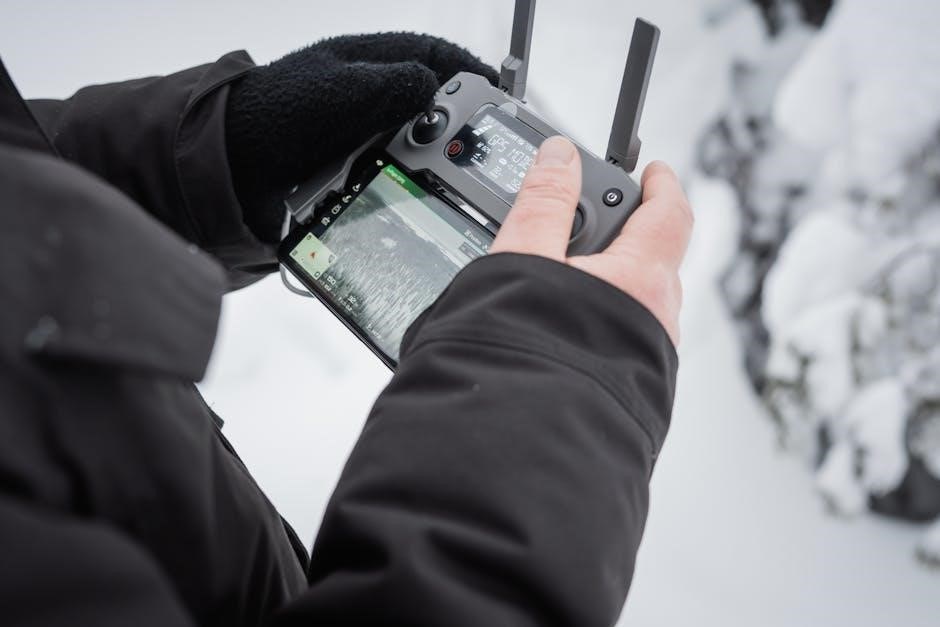
The X-31 Shockwave Drone excels in versatility and advanced technology, offering long-endurance missions, real-time data transmission, and autonomous operational capabilities, making it a cutting-edge solution for diverse applications.
4.1 Advanced Avionics and Navigation Systems
The X-31 Shockwave Drone features state-of-the-art avionics and navigation systems, enabling precise and efficient operation. Equipped with advanced flight control software and multi-sensor fusion technology, the drone ensures autonomous navigation and real-time data processing. Its integrated GPS and inertial measurement systems provide unparalleled accuracy, even in challenging weather conditions. The avionics suite supports mission planning, terrain avoidance, and dynamic re-routing, enhancing operational flexibility. These systems are designed to optimize mission efficiency and reliability, making the X-31 a cutting-edge solution for demanding applications.
4.2 Payload Capacity and Versatility
The X-31 Shockwave Drone is designed with a robust payload system, offering exceptional versatility for diverse mission requirements. Its modular design allows for the integration of various payloads, including surveillance sensors, communication relays, and specialized equipment. The drone can carry up to 50 kilograms of payload, enabling it to support reconnaissance, environmental monitoring, and search-and-rescue operations. The payload bay is customizable, ensuring adaptability to specific tasks. This versatility makes the X-31 an invaluable asset for both military and civilian applications, providing reliable and efficient performance across multiple operational scenarios. Its payload management system ensures optimal distribution and secure operation, maximizing mission success.
4.3 Communication Systems and Data Transmission
The X-31 Shockwave Drone features advanced communication systems designed for seamless connectivity and reliable data transmission. It utilizes high-frequency satellite links and encrypted radio communication to ensure secure data exchange between the drone and its operators. The system supports real-time video transmission and telemetry data, enabling precise control and monitoring of missions. With a high-bandwidth data link, the drone can transmit critical information such as sensor data and mission updates without interruption. Additionally, its communication systems are equipped with redundancy features to maintain functionality in challenging environments. This ensures uninterrupted operation and reliable performance, making the X-31 a dependable platform for critical missions.
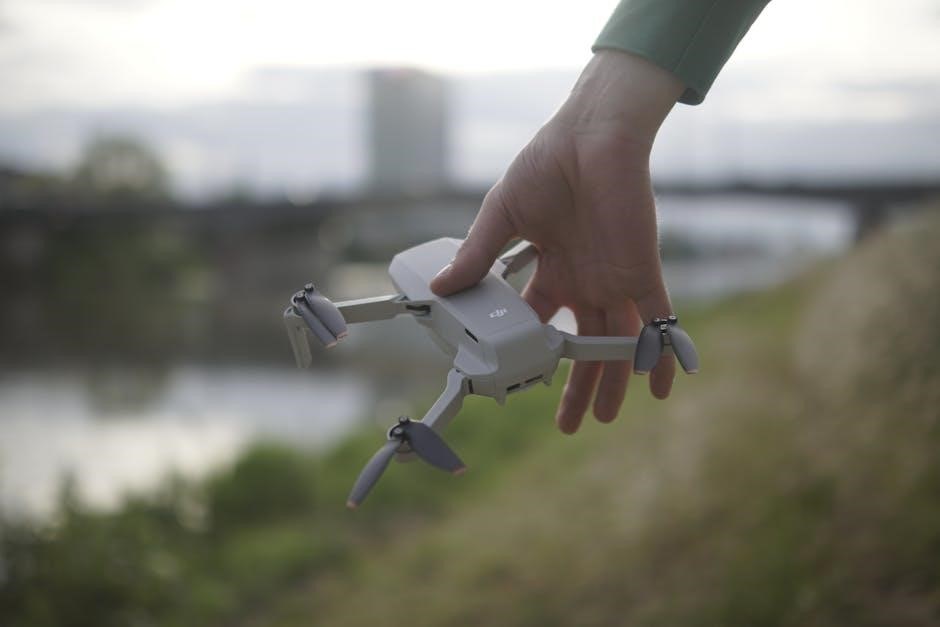
Flight Operations and Handling
This section provides detailed guidance on the operational aspects of the X-31 Shockwave Drone, focusing on efficient and safe flight management. Operators will learn how to navigate the drone’s systems, ensuring smooth and effective mission execution.
5.1 Pre-Flight Checks and Preparation
Conducting thorough pre-flight checks is essential for ensuring the safe and efficient operation of the X-31 Shockwave Drone. Begin by inspecting the drone’s physical condition, including the wings, fuselage, and propulsion systems. Verify that all avionics and navigation systems are functioning correctly. Check the communication links and ensure the payload is securely attached. Review weather conditions to avoid unfavorable flying environments. Operators should also confirm the drone’s battery levels and fuel efficiency, if applicable. Finally, ensure all emergency protocols are in place and that the control systems are calibrated for precise operation. These steps ensure a smooth and incident-free mission execution.
5.2 In-Flight Controls and Maneuverability
The X-31 Shockwave Drone features advanced in-flight controls designed for precise maneuverability. Operators can utilize the intuitive joystick system to execute sharp turns, altitude adjustments, and velocity changes seamlessly. Real-time data from the avionics system provides instantaneous feedback, enabling accurate navigation. The drone’s responsive controls allow for smooth transitions between flight modes, ensuring stability even in turbulent conditions. Advanced algorithms enhance agility, making the X-31 suitable for complex missions. Operators can also adjust heading and pitch dynamically, maintaining optimal performance. These features ensure the drone can adapt to diverse operational demands, delivering exceptional reliability and control during flight. Efficient maneuverability is a cornerstone of its design.
5.3 Landing Procedures and Post-Flight Protocols
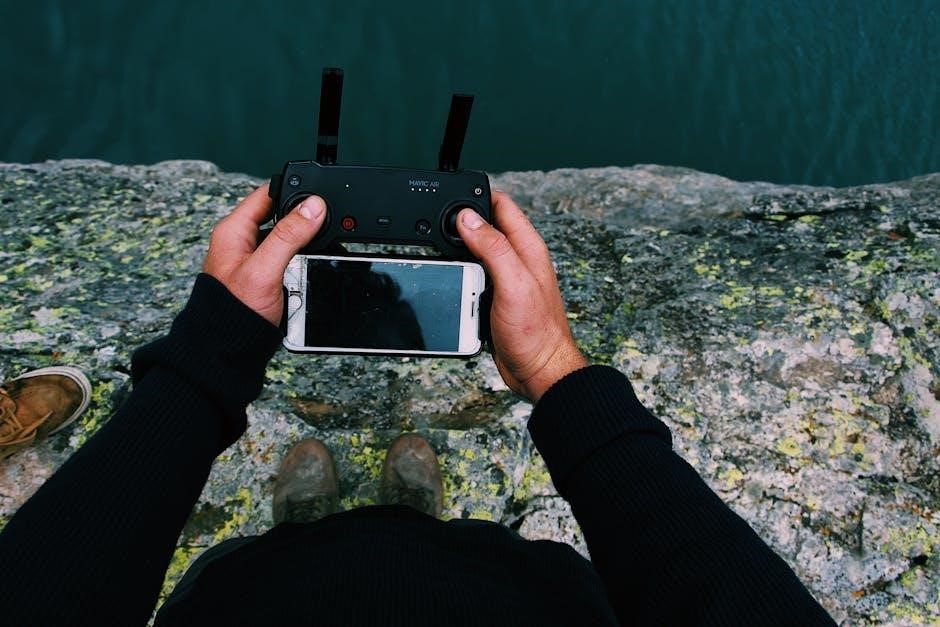
Landing the X-31 Shockwave Drone requires careful adherence to established protocols to ensure safety and system integrity. Operators should initiate the autoland feature when the drone is within designated landing zones, maintaining line-of-sight visibility. Once landed, the throttle should be set to zero, and the system powered down according to the shutdown sequence. Post-flight, conduct a visual inspection for damage and secure the area to prevent unauthorized access. Data from the mission should be reviewed and stored for analysis. Finally, complete the post-flight checklist to ensure all systems are properly deactivated and prepared for future operations. These steps are critical for maintaining operational readiness.
Safety and Maintenance Guidelines
Ensuring the X-31 Shockwave Drone operates safely and efficiently requires adherence to strict safety protocols and regular maintenance schedules. Pre-flight checks, post-flight inspections, and proper handling of components are essential. Always follow manufacturer guidelines to prevent accidents and extend the drone’s operational lifespan. Regular updates and system diagnostics should never be overlooked. By prioritizing safety and maintenance, operators can ensure reliable performance and minimize risks.
6.1 Safety Protocols for Operators
Operator safety is paramount when handling the X-31 Shockwave Drone. Always wear approved personal protective equipment (PPE) during pre-flight and post-flight procedures. Ensure the operating area is clear of obstacles and bystanders. Adhere to all environmental and weather-related restrictions to avoid hazardous conditions. Familiarize yourself with emergency shutdown procedures and communication protocols. Never operate the drone while fatigued or under the influence of substances that impair judgment. Regular training and certification are essential to maintain proficiency. Strictly follow the manufacturer’s guidelines for startup, operation, and landing. Compliance with these protocols ensures the safety of both the operator and the equipment. Report any anomalies immediately to prevent accidents.
6.2 Regular Maintenance and Inspection
Regular maintenance is critical to ensure the optimal performance and longevity of the X-31 Shockwave Drone. Conduct pre-flight inspections to check for damage or wear on propellers, control surfaces, and sensors. Post-flight, inspect the drone for any signs of stress or malfunction. Perform routine software updates to maintain system integrity and functionality. Clean debris from air intakes and vents to prevent overheating. Check battery health and charging systems regularly. Lubricate moving parts as specified in the technical guidelines. Only authorized personnel should execute maintenance tasks. Keep detailed records of all inspections and maintenance activities. Adhere to the manufacturer’s schedule for part replacements. Neglecting maintenance can lead to operational failures.
6.3 Troubleshooting Common Issues
Identifying and resolving issues promptly is essential for maintaining the X-31 Shockwave Drone’s performance. Common problems include connectivity loss, navigation errors, or propulsion system malfunctions. Start by reviewing error messages and checking system logs for clues. For connectivity issues, restart the drone and ensure antennas are undamaged and properly aligned. Navigation errors may require recalibrating sensors or updating GPS firmware. Propulsion problems often stem from debris blockages or worn components, which should be cleaned or replaced as needed. Always refer to the diagnostic tools provided in the manual for precise troubleshooting guidance. Document all issues and solutions for future reference.

Applications and Real-World Use Cases
The X-31 Shockwave Drone is deployed for military surveillance and reconnaissance, while its civilian applications include search and rescue missions, environmental monitoring, and agricultural surveys. Its portability enhances versatility in various operational scenarios.
7.1 Military Applications and Missions
The X-31 Shockwave Drone excels in military operations, offering real-time surveillance, reconnaissance, and intelligence gathering in combat zones. Its advanced sensors and high-resolution cameras enable precise target identification and tracking. The drone is also utilized for precision strikes, delivering payloads with pinpoint accuracy while minimizing collateral damage. Its endurance and stealth capabilities make it ideal for long-duration missions in hostile environments. Additionally, the X-31 supports battlefield communication relay and electronic warfare operations, enhancing tactical coordination. Its versatility and reliability make it a critical asset for modern military forces, ensuring operational success in diverse mission scenarios.
7.2 Civilian Applications and Research
Beyond military use, the X-31 Shockwave Drone offers significant potential in civilian sectors. Its advanced surveillance capabilities make it ideal for environmental monitoring, such as tracking wildfires or assessing natural disasters. The drone is also suitable for infrastructure inspection, providing detailed assessments of bridges, pipelines, and other critical structures. In search and rescue operations, its high-resolution sensors can locate survivors in remote or disaster-stricken areas. Additionally, the X-31 supports agricultural applications, such as crop monitoring and precision farming. Its telecommunication relay feature can extend connectivity in remote regions, aiding in emergency communications. Researchers also leverage the drone’s cutting-edge technology to develop new innovations in UAV design and functionality.
7.3 Future Potential and Innovations
The X-31 Shockwave Drone is poised to revolutionize unmanned aerial operations through continuous innovation. Future advancements may include AI-driven autonomous systems, enabling the drone to perform complex missions with minimal human intervention. Enhanced sensor fusion technology could improve real-time data processing, while next-generation propulsion systems aim to extend range and endurance. Researchers are also exploring modular payload designs, allowing the drone to adapt to diverse mission requirements. Additionally, the integration of swarm technology could enable multiple drones to operate in coordination, amplifying operational efficiency. These innovations position the X-31 as a cornerstone of future UAV development, with applications spanning military, civilian, and research domains.
The X-31 Shockwave Drone represents a significant leap forward in UAV technology, offering unparalleled performance and versatility. This manual has provided a detailed overview of its design, capabilities, and operational guidelines, ensuring operators can maximize its potential. By adhering to the outlined protocols and maintaining a focus on safety, users can unlock the drone’s full capabilities across military, civilian, and research applications. As technology continues to evolve, the X-31 Shockwave Drone is poised to remain at the forefront of innovation, driving advancements in unmanned aerial systems. This manual serves as a foundational resource for operators, empowering them to achieve mission success with precision and reliability.
